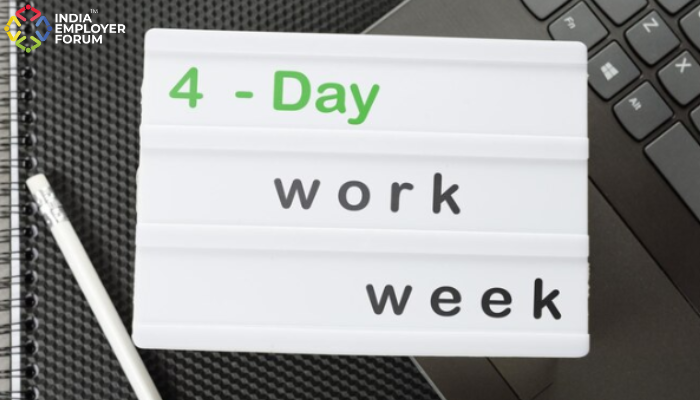HR roles are undergoing a change, redefining themselves from a side-lined activity to the front-end caretaker role of the main workforce. To the critics who called HR roles as a cost center, this about-turn signifies how they play the role of the revenue center in the future of work. Human resource activity keeps essential job roles filled, carrying out staffing and payroll functions that keep entire organizations running even in the most difficult times.
Changing HR roles
In terms of iconic years that roll out a multitude of changes in the way people perceive earnings, work-life balance, and business models, 2020 was at the very top. A full year after the COVID-19 pandemic unraveled the way professionals go about their workdays, the changes in Human Resource Development, Human Capital Management, and trends in Human Resource Management Systems are still thick in the air. It is up to the HR divisions of companies to make sense of these trends and help the staff cope with the changes all around them. To do this, HR roles themselves have to undergo change – from being custodians of policies and organizational goals to ones who create humane pathways that drive outcomes for their promoters.
Disruption in HR roles is organic
Some of the changes to HR roles were coming anyway, irrespective of the pandemic. For instance, automation was set to take out the routine activities from recruitment, staffing, performance management, and separation formalities. These activities still require human resource personnel to preside over granting approvals, carrying out specialized tasks such as conducting interviews, induction programs, coordinating training and development, facilitating covering of skill gaps, and exit interviews.
You might also be interested to read: ‘Mega Global HR Trends Are Catering To Two Simultaneous Big Bangs’
The time saved from the routine functions of data collection, upload of documents, formal roll-out of offer letters, and asset transfer can be used toward creative jobs and critical thinking avenues that make employee experience better. For instance, the time taken to fill roles after job posts are made, the number of employees using their vacation time to the fullest so that they stay motivated and engaged during the work hours, and intuitive training programs and modules that help employees do their jobs better are a few of the very many areas in which HR roles can move towards refinement. Such activities need insightful interpretation of available data, the pursuit of trends, and assessments and surveys to understand the pulse of the workforce. In focusing more on these tasks, HR roles bring sophistication and long-term value to their functional area.
The outcome-focused Human Resource function is humane, not one-size-fits-all
A careful analysis of the various areas of HR job families shows that the change was not long in coming:
Compensation and benefits administration are areas of HR where the change has been brewing since the development of the IT bubble. Full-time employee engagement models are not the only choices available to organizations – and it has been this way for at least two decades now. Contractors, gig workers, and consultants are commonly seen in IT, manufacturing, and product development domains. Compensation and benefits are drawn to fit skills-sets, demand-supply interplay of talent, and market factors, as opposed to traditional attendance-based models.
HR compliance is strongly benefited by automation. Timely alerts and targeted watch on regulatory changes is something no company, regardless of its size, can ignore. Automation and interpretation of policy changes is a crucial HR function that keeps organizations on track and their people responsible. HR compliance and labor laws are also changing regularly in the post-pandemic world. Emerging HR roles should switch to being proactive as opposed to reactive to stay compliant.
HR technology has become a buzzword. It has become nearly synonymous with Artificial Intelligence (AI) protocols that support workplace initiatives. It can apply to innate advisory and audits to watch over workplace safety norms. Or it can play a supportive and supervisory role over workplace planning, workforce analytics, and managing payroll activity. Robotic Process Automation suites are set to become the mainstream as opposed to being the exception by 2023. Tool-based checks and balances on measuring key performance indicators, tempering them with a sense of discernment that only human line and staff managers can offer is a recipe that combines the best of both worlds. HR technology has its place in carving HR roles, but it cannot function on its own without human intervention. Simply put, HR tech can cajole HR roles into more effective, efficient workflows, but cannot replace them. With a more tech-savvy working population, digitalization proceeds and becomes unhindered in the integrations it can offer.
The topics of talent management and compensation and benefits planning are closely intermingled in the world of work. Flexible engagement models breed flexible benefit plans. Emerging HR roles focus on outcomes – such as projects completed, delivery markers satisfied, and quality metrics – as opposed to timesheets and absenteeism records. These performance markers may then be used to draw up compensation packages in cash or non-cash terms. Professionals may opt for telework, location-independence, or autonomy in scheduling as part of their benefits package. They might choose learning modules, employer-led upskilling options, and certifications as part of their compensation. Contracts are drawn according to these myriad considerations.
HR roles are focused on building an employer brand and reputation that makes the most of all the flexible models stated above. In return for the flexibility made possible via diverse HR policies, employer brands build advocacy groups, loyalty forums, and turn their employees into their largest and most valuable promoters. Social networking and digitalization play a huge part in this endeavor, bringing fresh, promising talent into the fold. This way, all the efforts of the various HR roles are rewarded by the increasingly better response to talent management and acquisition initiatives that are brought out as needed. Employee advocacy and loyalty gleaned as a result are a welcome by-product of these concerted efforts.
HR roles are poised to adapt and change in keeping with the times so that the most important resources at the disposal of an organization – its people – work hand-in-hand with the investment, strategy, and time to refine processes and meet the organizational goals as well as the socially-responsible goals of making better workplaces for the future.
References:
- Emerging HR Roles in 2021 & Beyond | Human Resources Today | Jade Taryn Graham | February 8th, 2021
- 5 HR trends for 2020 and beyond: Technology will lead and transform |ET CIO | John Gaunt | January 2020
You might also be interested to read:
Related Topics:




